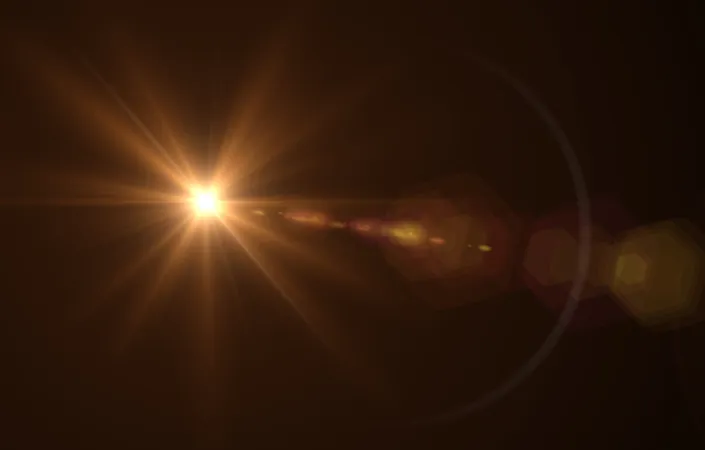
Astronomers Unveil WISPIT 2b: A Gas Giant in the Making Around a Sun-Like Star!
2025-08-26
Author: Sarah
A Stunning Discovery in the Cosmos
In an astounding breakthrough, a team of international astronomers has stumbled upon a young planetary gem: WISPIT 2b, a gas giant in its infancy, orbiting a star that mirrors the characteristics of our Sun.
Meet WISPIT 2b: The New Kid on the Block
Estimated to be merely 5 million years old, WISPIT 2b presents a fascinating case study in the early stages of planet formation. This discovery could revolutionize our understanding of how planetary systems, including our own, evolve over time.
A Collaborative Effort Leads to Groundbreaking Results
Researchers from esteemed institutions such as Leiden University, the University of Galway, and the University of Arizona documented this discovery in the prestigious Astrophysical Journal Letters. Utilizing the powerful Very Large Telescope (VLT) nestled in the Atacama Desert, astronomers initially planned to observe young stars for planetary signs.
An Unexpected Twist Reveals a Multi-Ringed Dust Disk
Rather than a simple pinpoint of light, the team unveiled a complex, multi-ringed dust disk enveloping WISPIT 2. This prompted them to delve deeper, eventually leading to the revelation of WISPIT 2b, cleverly hiding in a gap within the swirling disk.
A Remarkable Milestone in Planetary Discovery
WISPIT 2b is only the second confirmed planet detected in such a nascent phase around a sun-like star, and the first precise identification in a multi-ringed disk. This makes it a critical subject for ongoing and future explorations in planetary science.
Observing the Birth of a Planet
WISPIT 2b was captured in near-infrared light, revealing its glowing form still hot from its formation. A separate team at the University of Arizona confirmed its presence through visible light detection, indicating that the planet is actively gathering gas—an essential sign that it is in the process of building its atmosphere.
A Colossal Dust Disk: A Playground for Planets
The immense disk surrounding WISPIT 2 is impressive, extending to a staggering 380 astronomical units. These disks are renowned as the birthplaces of planets, adorned with visually captivating features like rings and spiral arms. Intriguingly, the structure of this disk is believed to be influenced by the very planet now forming within it.
Unlocking the Mysteries of Planet Formation
WISPIT 2b now serves as an exceptional natural laboratory for astronomers to study the interactions between young planets and their respective disks. By analyzing such systems, researchers aim to uncover the diverse array of configurations that exoplanet systems exhibit, especially those that starkly contrast with our own solar system.
A Surprising Turn in a Five-Year Mission
The discovery of WISPIT 2b occurred during a five-year observational project focused on determining whether gas giant planets on wide orbits are more prevalent around young versus older stars. While the primary objective was different, the unanticipated identification of WISPIT 2b marks a monumental achievement in the realm of planetary exploration.





 Brasil (PT)
Brasil (PT)
 Canada (EN)
Canada (EN)
 Chile (ES)
Chile (ES)
 Česko (CS)
Česko (CS)
 대한민국 (KO)
대한민국 (KO)
 España (ES)
España (ES)
 France (FR)
France (FR)
 Hong Kong (EN)
Hong Kong (EN)
 Italia (IT)
Italia (IT)
 日本 (JA)
日本 (JA)
 Magyarország (HU)
Magyarország (HU)
 Norge (NO)
Norge (NO)
 Polska (PL)
Polska (PL)
 Schweiz (DE)
Schweiz (DE)
 Singapore (EN)
Singapore (EN)
 Sverige (SV)
Sverige (SV)
 Suomi (FI)
Suomi (FI)
 Türkiye (TR)
Türkiye (TR)
 الإمارات العربية المتحدة (AR)
الإمارات العربية المتحدة (AR)